Art and Mental Health Links are Back
Your weekly digest of a niche of this astounding Substack writing community and some elaboration, connections, and hopefully community-building
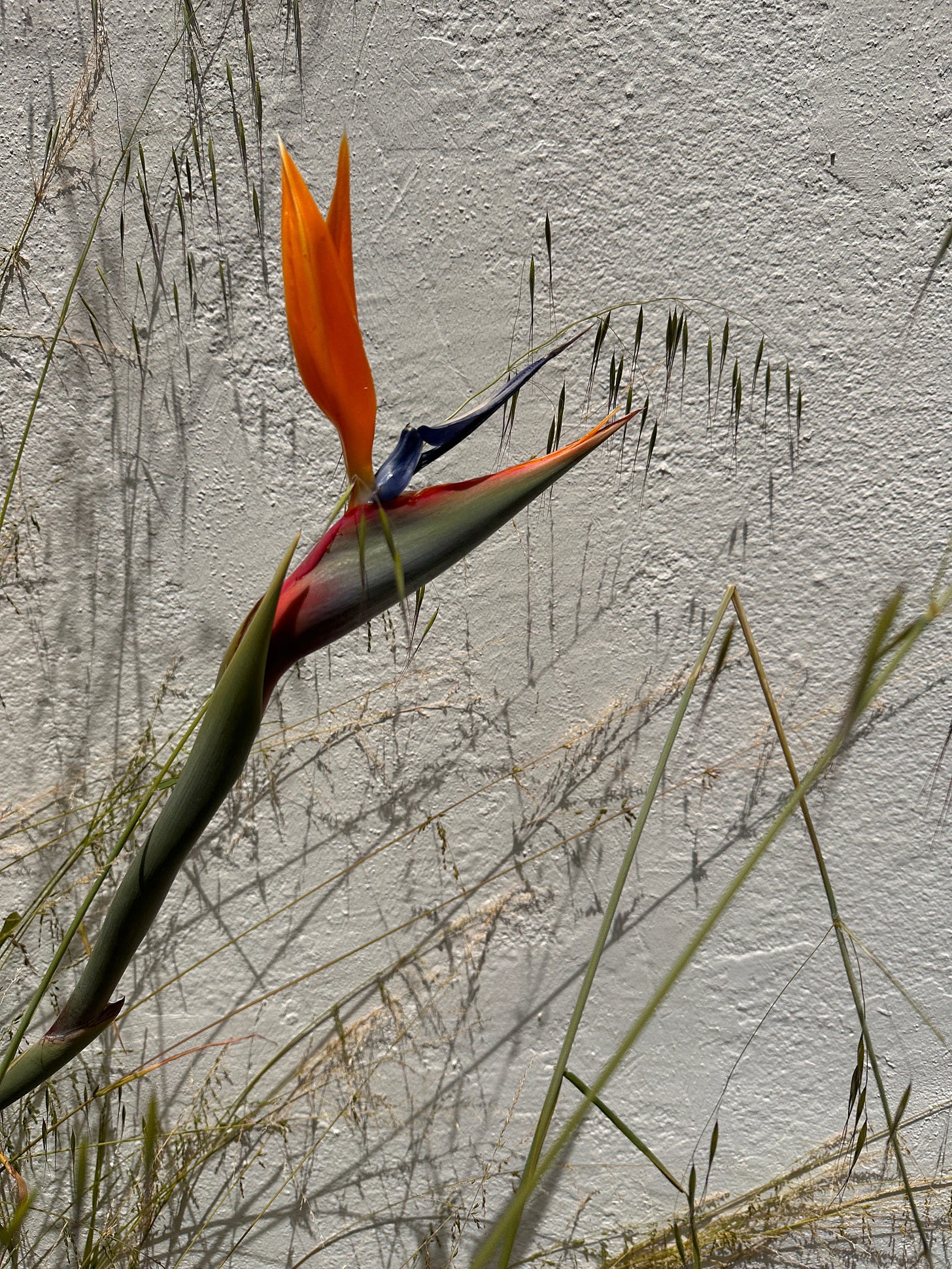
For nearly a year, every Friday here on Create Me Free’s Substack was a roundup of excerpts, links and ideas related to the unique niche of where art meets psychology. There are so many amazing writers here on Substack and I want to share their work. But this isn’t just a set of random links. I have an organized system that I use. I also elaborate, expand, draw connections and highlight patterns as I see them in order to make this a useful tool for creating community around the topic.
However, starting in January, I really struggled with whether or not to keep doing these roundups. I love them. I get a lot out of them. I believe in community building. But it wasn’t working for me and I was feeling lost. If you’re interested, here’s some of what I wrote as I was muddling through all of that:
A blunt look at what Create Me Free needed to shift since the financial realities didn’t start to match up with the creative dreams - specifically losing weekly digests, considering a milestone format. I then realized I needed to unsubscribe to 300+ substacks. Next I explored: Am I writing on Substack for income or for community and what changes if the answer changes? And then: Is Substack Really for Paid Newsletters or Is It A Writer's Social Media Site?
I’ve taken some time off to really figure out what I’m doing here on Substack. I’ve been here for a year now. It has had some amazing aspects and some that are frustrating and for a whole bunch of reasons I’ve decided I’m staying here for now. I don’t know that I’ve totally “figured it out” but I’m feeling better about it all. And I realized I was missing these weekly roundups. So, I’m dipping my toe in the water and bringing them back.
Some notes:
I don’t know if these will be weekly or less frequently. I have to see how it feels.
This may be a summer project. I’m completing the second year of a two year Masters in Visual and Critical Studies and still working full-time as a writer so once school resumes again in the fall this may not be feasible unless enough people are paying to support it.
Finally, these are going to be paywalled posts. I’m keeping this one free (but my archives are paywalled) to give newbies a sense of what they’re all about. However, I switched to a mostly paywalled model a few months back and I’m putting the paywall on these after a whole lot of consideration. Some people will be angry about that. That’s okay. Any writer who is included in the roundup and wants to be removed because it’s paywalled can just let me know. As a reminder, I offer a Sliding Scale Pay What You Can option.
So, here’s this week’s links and thoughts. I hope you find people here whose work you weren’t familiar with, had forgotten about, or just somehow missed and are incredibly inspired by.
Reminder: I draw connections between what the writers are sharing and my understanding of how that relates to art + mental health but this doesn’t mean that the original writer intended that or agrees with it in full or part … I always encourage you to go read the full pieces whose snippets capture your attention here to find out what the writer’s piece intends and offers.
From the past week or so then …
Mental Health and Creative Process
In el Sentido de la gratitud, of
shares more about her family’s decision several years back to embrace a nomadic, creative “vanlife.” She admits that there are plenty of things that she misses about the stability of a stationery home. And then says (the Spanish is her original; the English is my attempt at translation):
“Pero la vida es un camino, un proceso, un andar, un transitar. Y he descubierto que el errabundeo es una extraordinaria forma de transitar en este mundo: Activa tus sentidos, potencia tu creatividad, aumenta tu sensibilidad, destruye estereotipos y prejuicios, te transforma en un ser más libre.
But life is a path, a process, a walk, a journey. And I have discovered that wandering is an extraordinary way to navigate this world: It activates your senses, enhances your creativity, increases your sensitivity, destroys stereotypes and prejudices, and transforms you into a freer being.”
When we do what we need to do in order to live lives that are healthy for our minds, bodies, and souls, it affects the way that we create in such amazing, inspiring, profound ways. One of the things that I’m trying to do in my work is to break down the binary stereotype that exists about the relationship between art and mental health - that art is always therapeutic or that there’s this “tortured genius” aspect where you have to suffer to make art. Both can be true at times for some but so is everything in between. This is an example of how wellbeing can be what creates great art.
In case you missed it:
of shared a guest post from Klamo
which immediately stopped my scroll because it’s about crochet as healing which is my long-time niche.
“The way I crochet is a bit different. Due to some health issues, I crochet with both hands. One row with my right hand and the next row with my left. I don’t turn my work. This opens a whole world of possibilities. I didn’t come up with this. I was lucky enough to stumble upon the book “Tapestry Crochet” by Carol Ventura. She also explains very clearly how to chart pictures.
Since most crochet patterns are written for a right-handed person, I can’t use them as they are written, so I decided that it would be easier to create my own patterns. After several years, I’m not sure it’s easier, but I’m now addicted to the fun and frustrating process of designing and making my own projects. I love the questions “Could I…?” or “What would happen if I do…?”
Although this is about a shift in process, it reminds me a lot of this post:
shared The Art of Solitude
which is about loneliness as it relates to the creative process:
“In the life of an artist, loneliness manifests in various forms. There is the loneliness of the studio, where hours are spent in quiet contemplation, grappling with ideas and wrestling with doubts. There is the loneliness of rejection, as artists face the harsh realities of a competitive and often unforgiving industry. And then there is the loneliness of the soul, as artists navigate the complexities of their own emotions and experiences, seeking to express them in ways that others can understand.
But amidst the loneliness, there is also resilience. For the artist knows that loneliness is not merely a burden to bear, but a catalyst for growth and transformation. It is in the solitude of the studio that ideas take shape, and visions come to life. It is in the face of rejection that artists find the strength to persevere, to hone their craft, and to redefine success on their own terms. And it is in the depths of their own loneliness that artists find the courage to start again, to reinvent themselves, and to forge new paths forward.”
I realized as I was thinking about my own reaction to this piece that I don’t feel particularly lonely much anymore. And so I’m not sure it resonates in the same way for me as it would have at different times in my life. But the idea that loneliness comes into different parts of the creative process in ways that are difficult but also generative makes sense to me.
Mental Health and Creative Content
Sitting for Alice Neel by of
was one of my favorite things that I’ve read in a long time, in part because it’s so unique. It’s the story of, obviously, a woman who was painted by the great portrait artist, with excerpts from that woman’s diary about the experience. And it’s supplemented by information from her daughter who she was pregnant with at the time of the portraiture. One excerpt from the diary reads:
“I look like anybody’s grandmother but I'm really a vicious old woman.” I don't see her vicious side only the grandmotherly and artist side. She has said to us for quite a while, “Don't you want a baby a little keepsake, a souvenir?” Now she says that God has forgiven John Evans for not having a baby all these years by sending him two at once, twins!
And from the daughter’s interview portion:
“My mother recalls that she talked the entire time she sat down for her portrait; Alice loved to gossip and talk about people, which made the time go by quickly. My mother said Alice really captured that fear of the unknown that most expecting mothers feel both about giving birth and about the future of becoming a mama.”
I notice this part in particular because of what I already know about Alice Neel from the research that I did for the chapter about her that I included in my book, The Artist’s Mind. Perhaps I’ll share more details from that in its own post, but here are two paragraphs that explain why I felt like the information shared in Katy’s article might reveal something to us about the way that Alice Neel’s mental health/ state of mind/ life experience might have influenced the content of this art:
“Before the age of 30, Neel had lost a child to diptheria and was abandoned by her husband, the influential Cuban artist Carlos Enríquez. Their daughter, Santillana, succumbed to the disease one month short of her first birthday in 1927. As if this were not difficult enough, shortly after the birth of their second daughter, Isabetta, the very next year, Enríquez left for Cuba and took the child with him. Neel was under the assumption that the situation was temporary, and that she would meet her husband in Paris while Isabetta stayed with her aunts in Cuba. She didn’t expect to be separated from her daughter for long. However, Neel would not see her daughter again for six years. In fact, Isabetta’s story is tragic. They saw each other only three times after they were separated; once when the child was 6, Neel painted her in the nude which met with much criticism. Isabetta died by suicide two years before Neel’s own death, the two having stayed estranged all of those years. Isabetta’s own daughter, who has expressed disgust over the nude painting off Isabetta, never met her grandmother’s side of the family.
When Enríquez left for Paris without her, Neel suffered through a terrible and lonely summer. In an undated note from this time she writes, “‘Carlos went away. The nights were horrible at first...I dreamed Isabetta died and we buried her right beside Santillana.” The separation forced Neel to endure even more grief, and she struggled with feeling she had effectively lost a second child. Although initially she threw herself into painting in an attempt to work her way through the sadness, ultimately she had a breakdown and was hospitalized.”
of shared a guest post by of titled On Claiming Space for Writing
and this part describes to me how we can make changes to our creative spaces that enhance our mental health as it relates to our creativity … and therefore alter our creativity in positive ways. I’ve written about ways to do this as a crafter in my book Hook to Heal, with tips for creating sacred spaces in small ways that honor the power of your knitting or crochet. Here from Lilly, about her new desk, obtained just before starting her next book:
“When it arrived and I scooted it into place under the new office’s wide window—where it fits perfectly—it felt like a door opening. It felt like a beginning, like a promise to myself. A literal expansion of the space in my life that writing could claim.
The rest of the office took shape around the new desk: A new small bookshelf just for books related to my current project, where I can glance at them throughout the day and easily reach over to leaf through them. A new lamp for when I work late into the evening and the overhead light isn’t enough for my tired eyes. Stick-on dry erase sheets on the wall for to-do lists and ideas. The art on the walls began to coalesce around the theme of my new book, female friendship: art postcards featuring pairs or groups of women; a print I bought years ago from a photographer friend of three women in a bath house; a new print from another photographer friend, of five teenage girls lounging in a field. As I hung each new piece, it felt less like decorating a room and more like building a nest, or casting a spell.”
In Käthe Kollwitz - Sorrows Observed on author
shares the combination of global and personal tragedies that marked the artist’s life, then adds:
Hence, it is little wonder why Kollwitz so often chose to base her work around the subjects of grief or emotional distress.
Whether she is depicting herself (as she did on at least 50 occasions that we know of - not including many of the works which may have been destroyed when her home was bombed in the 1940s) . . . or whether she is depicting the plight of every day workers and downtrodden communities - clearly, she had a deep affinity to the kind of pain that sadly so many of us face in our lifetime.
Yet what strikes us so acutely with her work too, is the underlying sense of compassion.
Trauma often becomes the content we create about it as we aim to metabolize, understand, express its impact.
Mental Health and Creative Medium
of begins The Creative Path: Reflections Inspired by the Ten Ox Herding Pictures with:
“I am an artist that deals in images. I feel a certain safety in hiding behind my symbols and imagery. As a medium, words are my final frontier. Language is elusive; the words I nail down to the page or to my screen rarely match the vibration of my spirit.”
There’s a lot more to this article which is an interview about journaling with
reshaped into a unique format inspired by “the Ten Ox herding Pictures, a series of allegories from Zen Buddhist teachings that depict a seeker's path to enlightenment through the search for, taming, and eventual release of a bull.” But the intro captured my attention first …Because I am first and foremost and primarily a writer. Words are my medium. And yet, there are many times when words won’t come, don’t suffice, frustrate instead of healing. And in those times, I turned to crochet and collage and very amateur photography and even more amateur drawing/painting. Because the words need to come out but they don’t always come out in the form of words at first.
Which is also why I offer the opportunity to answer interview questions in images only.
Mental Health and Creative Productivity
of wrote Blocked Artists And The Lies We Believe
which shares a variety of personal creative lessons gleaned from a recent experience of Julia Cameron’s “The Artist’s Way.” One lesson is the realization that reading can be a form of creative block.
“I was shocked. How could reading be a block?
When I journaled about it I realized almost immediately how I used my constant reading of nonfiction as a way to numb out. I also realized that instead of filling my well at the end of the day by spending time drawing, knitting, playing with my dog, or talking to another human, for example, I usually went straight to reading a nonfiction book where I could learn something.
My poor brain was never getting a break. I was addicted to information—I always needed to know more and be more informed, which I came to see as the block of perfectionism. I also was spending too much time reading other people's ideas and not making enough room for my own ideas to germinate.”
I have had this realization myself at times. It’s an interesting thing, because I “should” on myself about wasting time/ brain on trashy reality TV or endless true crime podcasts but I don’t usually “should” on myself for reading endlessly. I hold an internal belief that was given to be my society/home/etc that reading is always good for you. And that TV is bad for you. And yet I often use them both in the same way. I often read the same style of book (memoirs written by women, for example) so that even though I love immersing myself in the story also what’s happening is that I’m numbing my brain in the same way that I do with formulaic TV (think Law and Order).
And I’m also someone who loves information. If you’re an Enneagram person, I’m very much a five in this way.
Right now I’m working on not seeing any of my habits as good or bad but just noticing how they make me feel. And I’ve definitely felt overwhelmed when taking in too much information in a way that is out of balance with being able to hear my own voice. I love books. But I also love the beating of my own heart.
RELATED: This illustrated post on creative blocks by of
Mental Health and Creative Identity/Self-Perception
wrote about the practice of commonplacing
“The reason why this revelation about commonplacing felt so significant was because I've long struggled with feelings of inadequacy about how I take notes. My approach is far from minimalist: I have over 18k+ notes in Apple Notes alone, numerous places where I keep track of audio and video notes, and over 26k+ screenshots on my phone—and that's after I delete a lot of them! I am even more cautious about taking up too much space with my physical notes, and I try to keep my notebooks to one box in my closet and one bookshelf. But despite these attempts at keeping things in order, I still often felt guilty, especially as someone who is autistic and also has ADHD, which can make organizing and prioritizing information in “traditional” ways difficult. It's hard to explain, but there's this part of me that finds the process of taking notes and capturing to be very helpful and it's hard to reckon with that when it doesn't quite feel aligned with the widely accepted "best practices.” Now, I'm certainly not saying that everyone has to take my approach, nor am I advocating for excessive accumulation. However, the prevailing wisdom has frequently appeared to suggest that a minimalist, neatly organized approach is superior for all things, and for years, I believed that something was wrong with me because I couldn't adhere to that.”
I find Morgan’s work so inspiring that it’s hard to imagine that she struggles with feelings like this. Which is ridiculous, of course, because I know better, and I know that she is human that all of us humans struggle and that we shouldn’t “compare our insides to their outsides” and all of that. I know. But I forget. And I so appreciate when I have the chance to remember again.
Am I late by of
delighted me because it references a book that I love:
“I was googling Mary Delany because I’d come across the gorgeous cover of a book about her, The Paper Garden, An Artist {Begins her life’s work} at 72 by Molly Peacock.
I never read the book, but the cover and title stayed with me. The artist begins her life’s work at 72. It is a definitive and bold statement, full of ownership, yet one that can be arrived at only in retrospect. Because when we begin something, a new interest or a project, there is only the merest promise of it to go on.
I remember thinking about that title often and feeling a burst of optimism because there might be interests or talents I hadn’t yet arrived at. That life was yet unfolding.
Even if we are starting over much later in life, we don’t start from scratch. What if, just like a Connect the dots puzzle with its consecutive numbers, there are areas of our lives we can only reach after traveling through the others, and we are right on time for that new project, habit, job, or mindset? If the meandering makes sense only in retrospect, can we ever be late to bloom? By rejecting an inflexible and unvarying finish line for bringing ourselves to blossom, we claim authority over the timelines of our lives.”
I’m always kind of collecting stories about people who do amazing, inspiring, creative, rich wonderful things in their seventies, eighties, nineties, beyond. This book was one of those for me. (As an aside, author Molly Peacock also has a book of poetry called The Analyst which is such a rich exploration of the therapist-client relationship.) Priya’s article made me think of the quote:
Mental Health and Creative Business
Speculative Investing Made Personal by of
is the kind of piece that I really need to go back and read several more times before I’m able to adequately express my thoughts, which is often the case for me because Tara really makes me think deeply and differently about things I was already sort of thinking about.
In this piece, she explains the concept of the "anticipatory, speculative self" as defined by scholar Alison Hearn, how this leads to constant “self-improvement” and how this relates to the phenomenon in the work-for-ourselves world (with hat tip to Byung-Chul Han) where:
“We don’t need the demanding schedule set for us because we’ll do it ourselves. We don’t need the bar raised on our performance because we’re all too happy to set it as high as possible. We’re invested in being an uncompromising boss to ourselves.”
Then Tara gets into the prevalence of writing in the second person, forming an identity as an Advice Giver, how this contributed to her own burnout and changes in her own career. Read that part yourself because it’s rich and important and I keep thinking about my own language that’s complicit in this and whether or not I want to make any intentional changes there. Upon her own shift, Tara says,
“I try to avoid speculative investments in myself. I'm not trying to become someone for the return on investment; I don't want to speculate on how I could present myself for maximum yield. This, honestly, is much harder than cutting down on directly addressing "you" on social media or in articles. I can say pretty confidently that backing away from this practice has directly led to a few years of less-than-ideal (and, frankly, unsustainable) financial results.
And while those more material challenges certainly increase my stress levels, I feel less alienated from myself and less likely to dissociate. Sure, I'm still curious about who I am becoming and how I might pursue new paths in life and work. But that curiosity isn't hung up on optimization or value maximization anymore (usually).”
Our mental health and our creative businesses are all tied up together in really complex ways. Aiming to understand this is a critical aspect of both my personal and professional work. I’m unraveling it, slowly, steadily, and this is a piece I’ve bookmarked to review more.
RELATED: From Saying No To Purpose-Driven Anxiety by of
“The word for purpose - tachlit - shares its root with the word for kidney - kilya. The function of a kidney is to remove waste, toxins and excess from the body and to regulate essential functions. Whilst many body parts can be removed, we cannot live without a kidney or artificial dialysis. So often we speak of purpose as an aim or objective, a result we set out to achieve, a series of actions. What if we thought of purpose as a regulatory system? What if we thought purpose was the inner wisdom that helps us reject what is bad for us and helps us hold on to what works to keep us well in mind body and soul? What if finding purpose was less about ascertaining what we had to do out there in the world and more about learning to listen to our internal filter systems? What if it was less about locating our place in society and more about finding the center of gravity deep within us?”
of shared Quiet Openings
offering a great example of staying true to your own creative needs in a business:
“As an artist, events are the main way I’ve been taught to celebrate and showcase my work and accomplishments. But the truth is, a blast of scattered micro-engagements condensed into a few hours one brief evening doesn’t feel like celebrating. Having gotten this far, and now being able to work quietly in this space, is celebration enough for me.
It’s an entrepreneurial trope, and a tired one, to believe that I should maximize every aspect of launching. Most everybody who's been in my shoes heralds events as the best way to get people in the door, which is another way of saying that events are the best way to make money. Money is important, sure, but I’ve generally found it to be a shitty compass. My compass is directing me towards something slower and more intimate, rather than something showy and immediate.”
of wrote swatch, swath, swathe
which is the most delightful illustration-rich story celebrating handmade towels that didn’t start as towels and the healing process of weaving …
“I was also (as I wrote last week), rather in need of something or other to help me unwind after a month on the road.5
And how not to be enchanted by the notion of plain weave devotion in the freshly lilac-scented air?”
How Art Heals
In an interview with from writer shares:
“Through the years, I religiously kept a journal up until a few years ago. It’s how I process. When online blogging like Xanga and Livejournal came along, I started putting my nonfiction on there under pseudonyms. I wasn’t allowed to talk about family issues outside of the family, so journaling and blogging were my only outlets. I had to hide my online writing behind fake names so my parents wouldn’t find it. But I discovered the healing power of writing through this lifelong journey, and I still remember some of the kind comments from those early days that encouraged me.”
When Art Is Complicated
Becoming a Photographer Because of My Mom, and Despite Her by of
is a powerful story of how complicated art-as-a-career can be in some families. In part:
“Mom instantly encouraged this, and I spent all my childhood hearing her praise and imagining myself as a future painter. She supported everything — I took painting classes, spent a year in an art school, and was a staff artist with my high school magazine. I wrote decent poetry. I took ballet. So, it was to my great surprise that when I declared my plan to major in painting and art history at NYU, mom suddenly put her foot down. "Pre-med or law," she said. "Art is a hobby, not a profession."
I felt somewhat cheated, but believed that mom had my best interest in mind, and so I put myself through a psychology degree and four years of pre-med. As graduation loomed closer, a dark void would swoop in, crippling me with anxiety. I took the MCATs with the same excitement as if I were committing myself to prison. Then came my birthday. Just as I was about to send out medical school application, mom gifted me my first digital camera, immaculately wrapped with a bow (mom was a professional at giving presents). The rest, as they say, is history.
First, however, came the Dark Ages. As an unemployed photographer, I lived with my parents throughout my 20s, and many evenings I overheard them discuss what a disappointment I turned out to be. Mom would lament all the hard work and effort she put into me. She regretted encouraging my various art hobbies and partly blamed herself for my failure. My parents were so embarrassed by my new career choice, that they encouraged me to lie to my 86-year-old grandmother because they were afraid the truth would literally kill her. For five years, I spun stories about my non-existent medical school experiences, and when my grandmother died, she was proud of me for becoming a doctor.”
of wrote Marketing in a Broken World
which has a lot to say about being exhausted right now that I think resonates for many of us. And this:
“Perhaps this is just what it is like to be a big feeler, to be highly sensitive, to be neurodiverse. War wages on and I find it can feel so embarrassing to say - Oh the world is a mess, take my little quilt class! Oh the world is a mess? Come to my little co working group!
I am reminded, time and time again, that this is actually where deep and revolutionary work happens. When we gather we are saying fuck you to capitalism and yes to making blankets for the sake of blanket making. We are saying fuck you to war taking away our desire for creative practice. When you market your offerings you are not saying that you don’t see the world, but that the world keeps on turning and the work keeps on needing to be worked.
We don’t carry on business as usual, because we can use our offerings to point the direction of our attention toward our values and what matters to us the most. And yet business must carry on. We labor and we work and we fight for what we believe in and they don’t have to be separate.”
Keep making. Keep being. Keep trying. And rest when you’re exhausted so that you can keep going.
Art in Community
by had a post called Why I don’t love bookclubs
“Like every book lover in the world, I have spent a fair share of life belonging to various bookclubs. They always hold so much promise and, for me, inevitably end in disappointment. I expect good book selections, deep reading, real learning, intellectual stimulation. What I get is a book list that is all over the place, superficial conversation, and a sense of underwhelm. Good times are had but the mind is at rest.”
I’m a voracious book reader but have never actually been part of a book club for various reasons. I actually just joined my first book club, although I haven’t been to a meeting yet, because it’s specifically about books that are set in San Francisco which is a niche passion of mine and that’s something I’m keen to share with others. We’ll see.
Petya’s piece goes on to discuss some of the virtual book clubs that are forming here on Substack and why they feel more aligned. It made me curious:
Short Shares
A few more poignant passages that I felt moved to share:
From over on by in Turning towards pain in order to heal:
“When there is joy I turn toward it. When there is grief I greet it. I have morning tea with my shame, and an early dinner with scarcity. When there is art that wants to be created, I create it. When I want to turn away, I turn back and find out why. It is freedom in the most complete sense.”
From of in At The Intersection of Worlds
“So many of us pass through this world ensconced inside our private bubbles - of media, screens, and noise-cancellation devices - without awareness of the commonalities we share with others around us. Maybe it is language, or ethnicity, or neighbourhood, or profession. Maybe it is hobbies, or favourite TV shows. Maybe it is something as simple as a common destination. We take many things for granted while moving through our complicated, busy worlds. But it is the job of the sneaky artist to not take common things for granted, because the art is often found in places like these. A sneaky artist must be alert. The art is hidden in plain sight.”
Quick Shoutouts
I love what
of is sharing with her Kindness Chronicles which are stories of our pets, rescue animal stories, etc. She’s looking for more contributors (unpaid right now, though she hopes to shift that, but she’s so easy and wonderful to work with). Here’s what she’s seeking. And here’s the first part of a story she shared of mine that’s about my old pup who passed away a few years ago but was really my soulmate dog. It’s because of her that I have the two that I have today:And, as I shared over in Notes, I’ve decided to subscribe to a serial here even though I’m not really a serial type of reader because
’s “The Spring” over on looks too compelling not to try. Hat tip to for the article that told me about it.



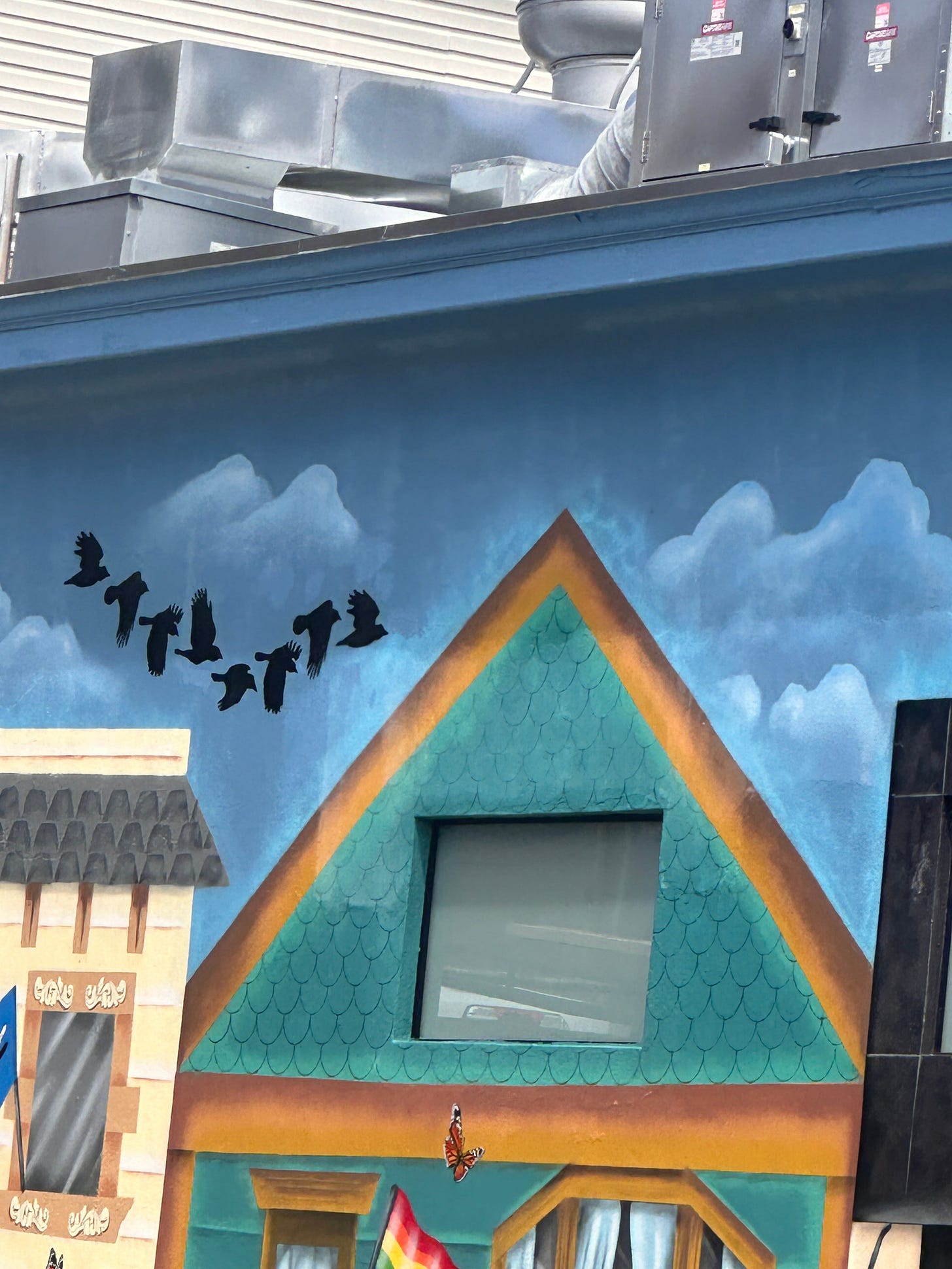
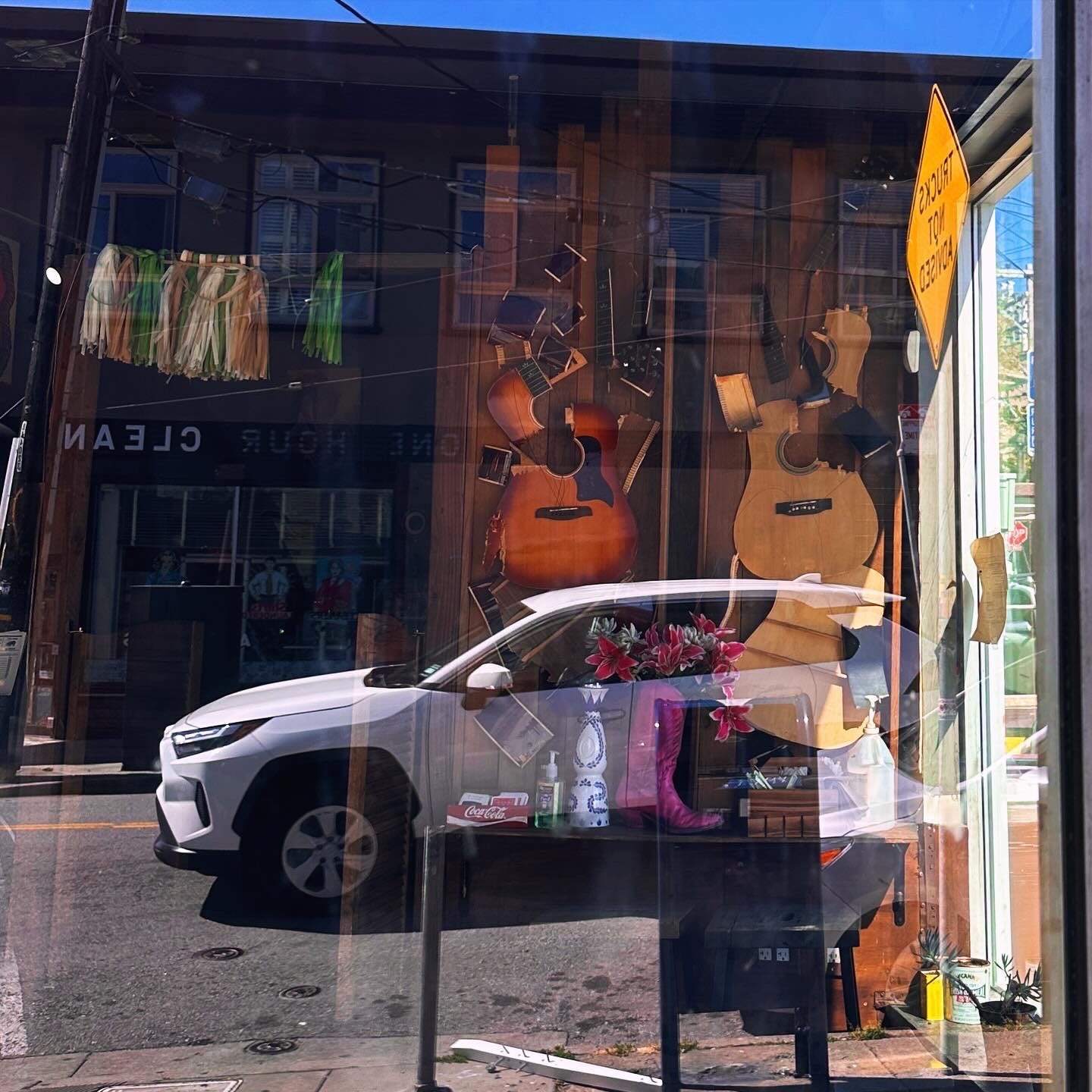

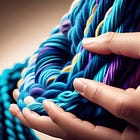
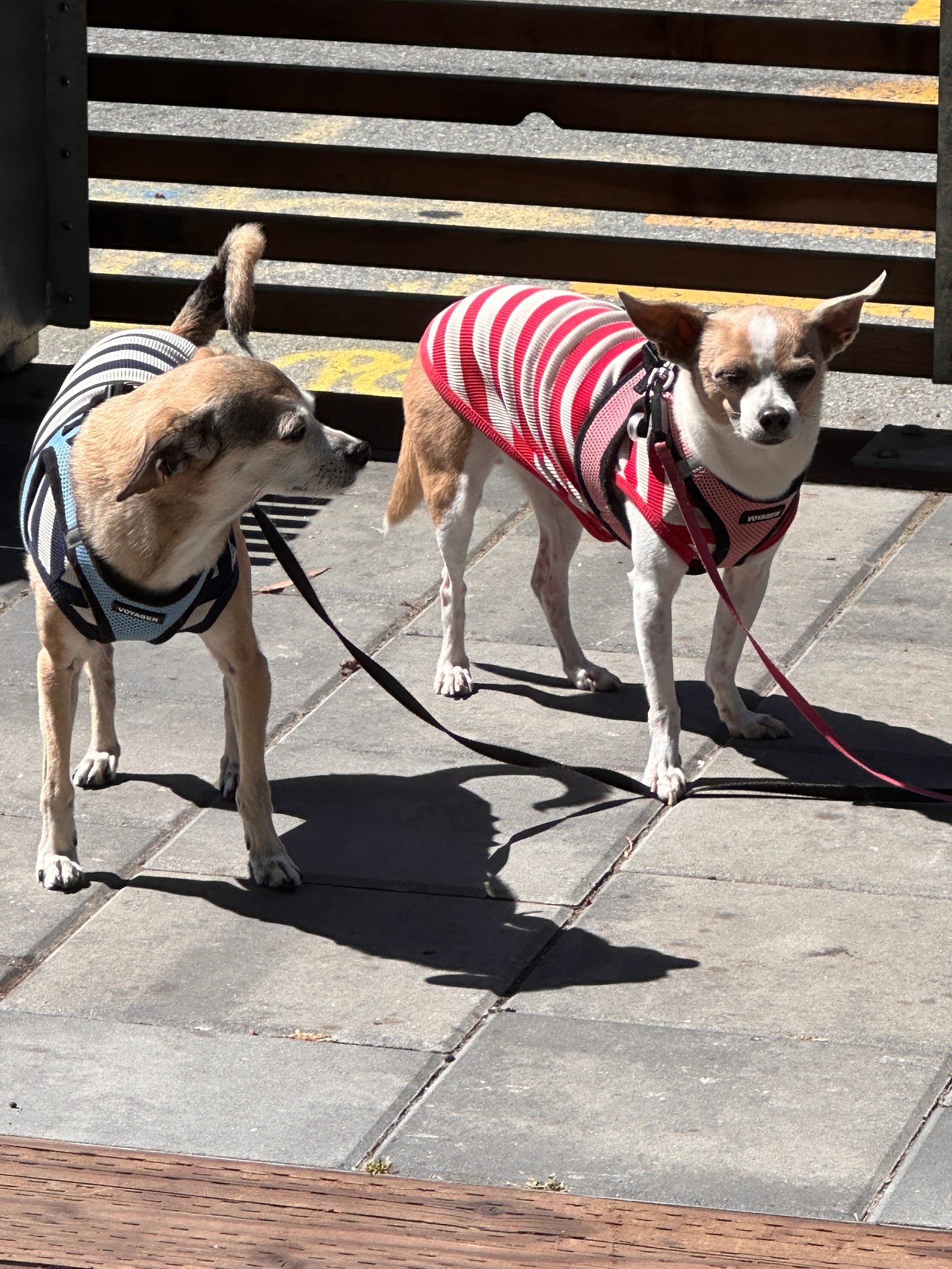
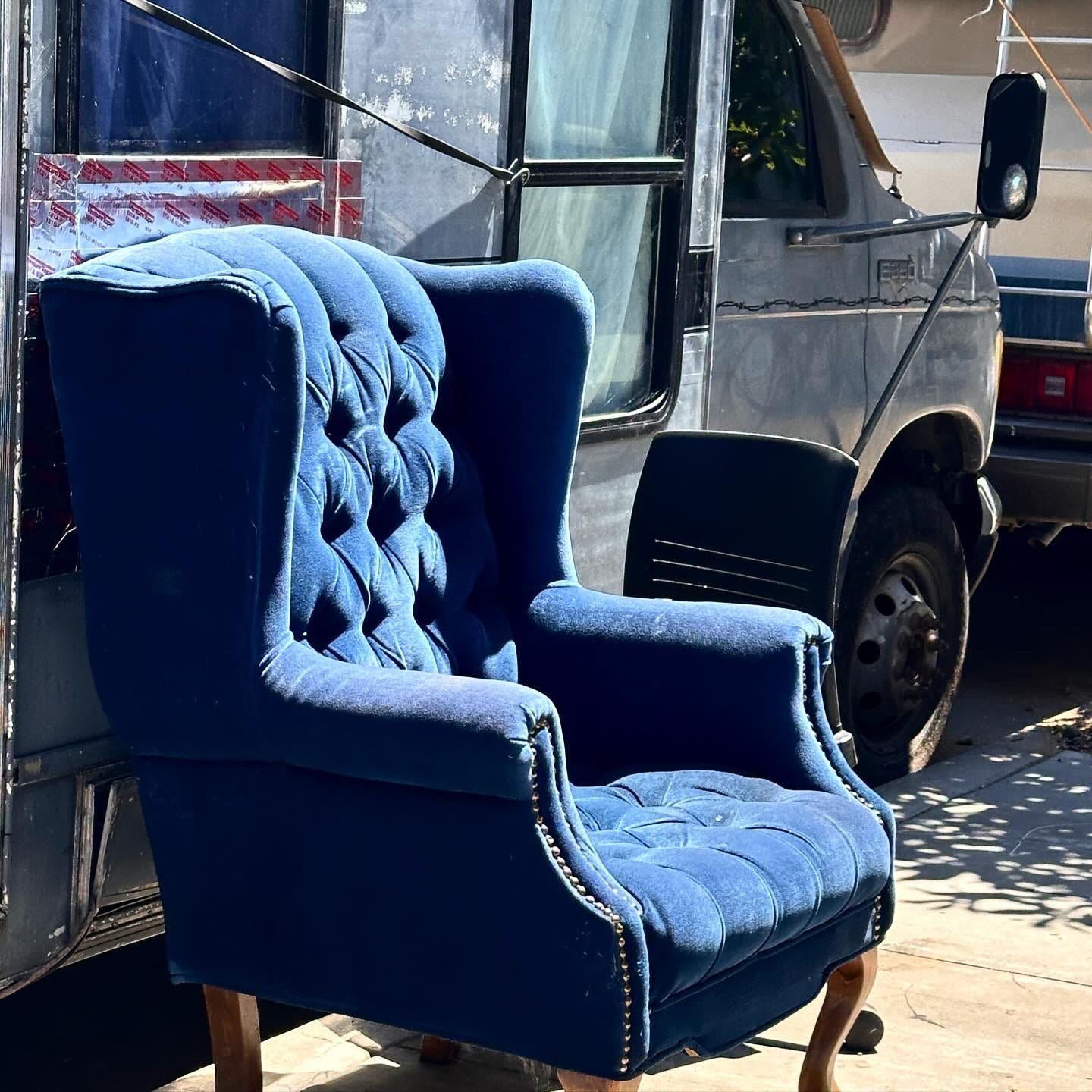
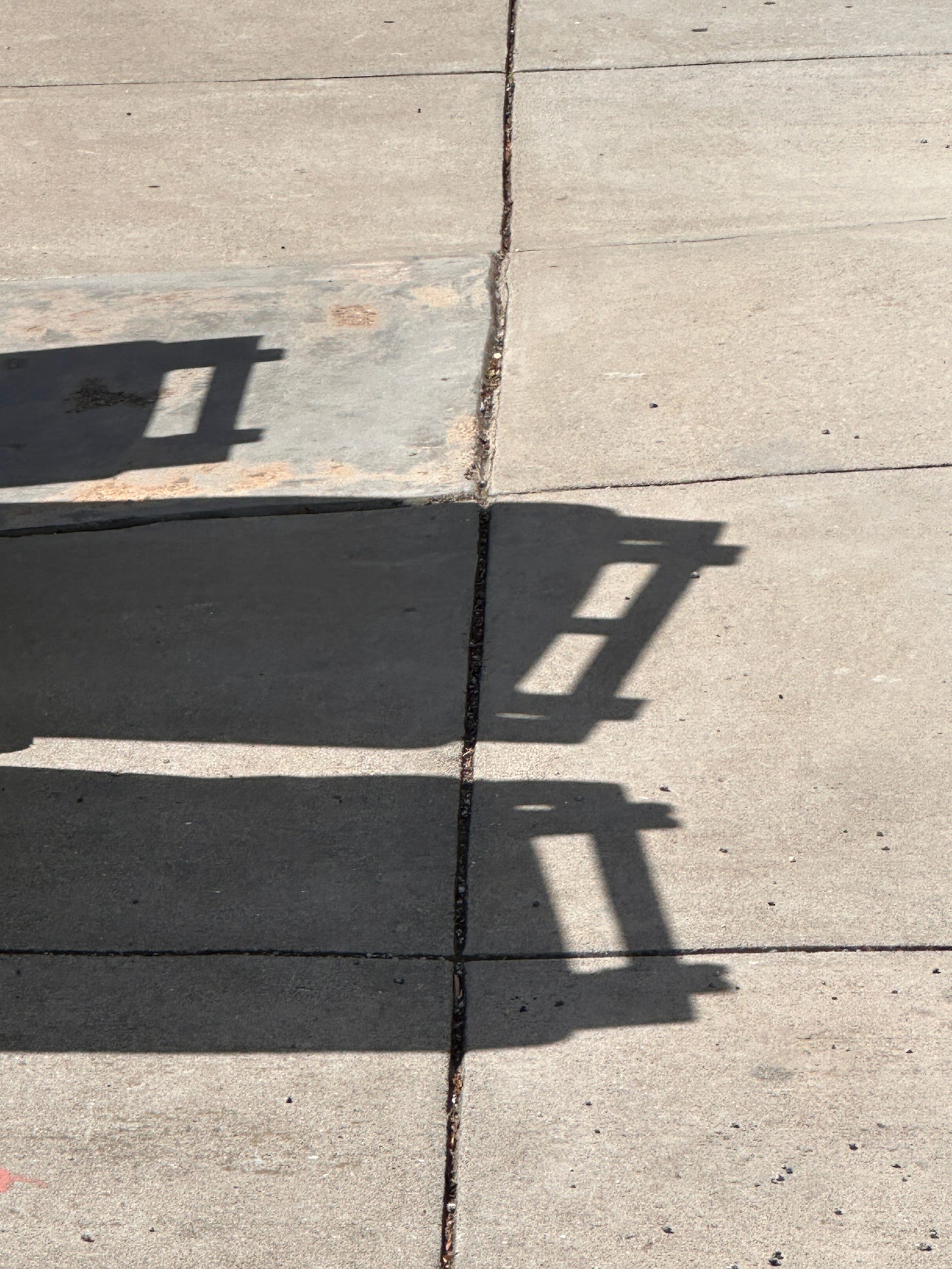

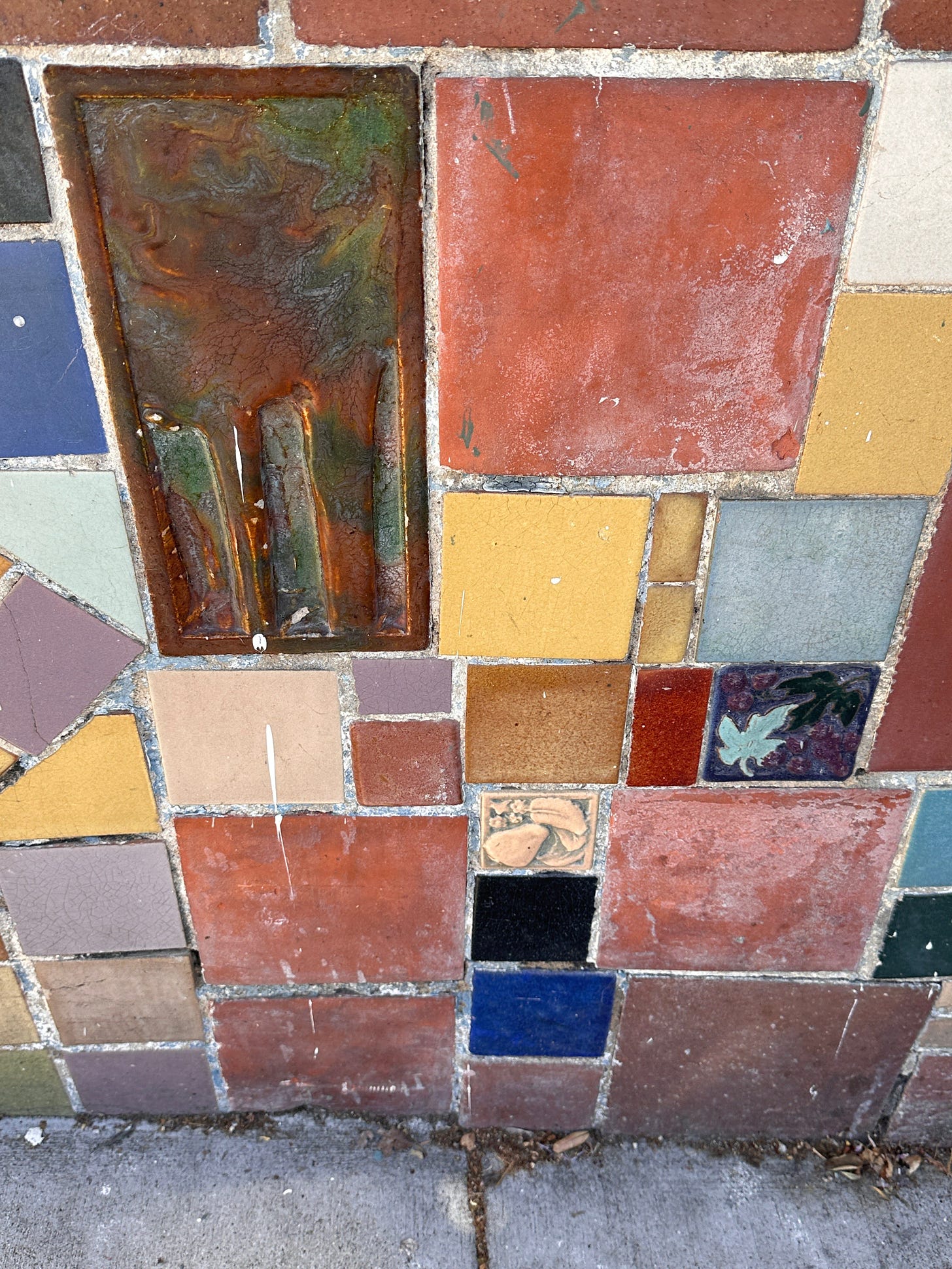
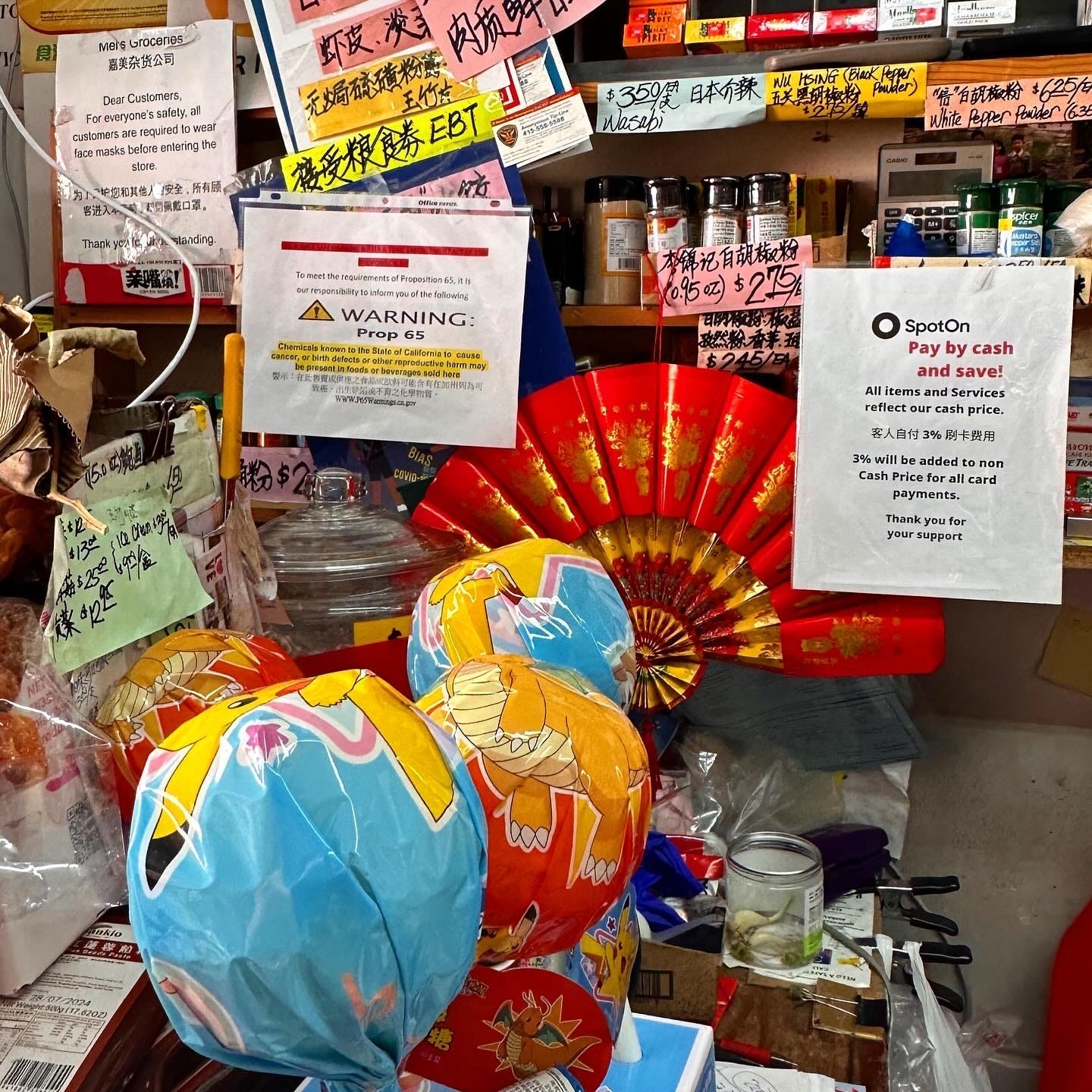

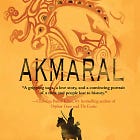
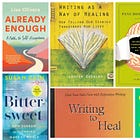

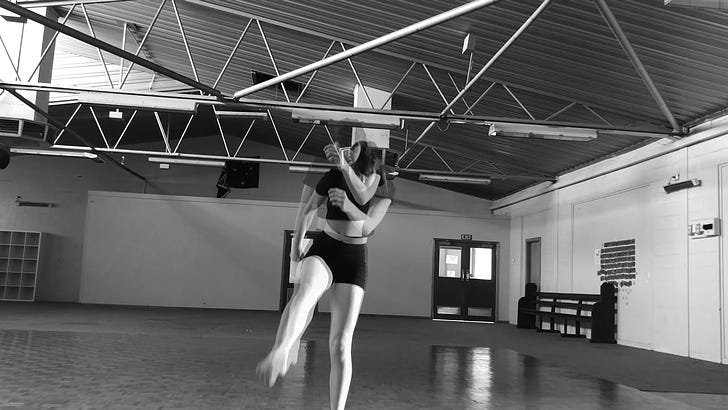

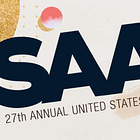
I am really grateful for the compilation and review of all these incredible and inspiring texts. There are many authors that I didn't know. and I especially thank you for including me. When we write we don't really know where our words will land. It feels great to make sense to someone✨
Wonderful!